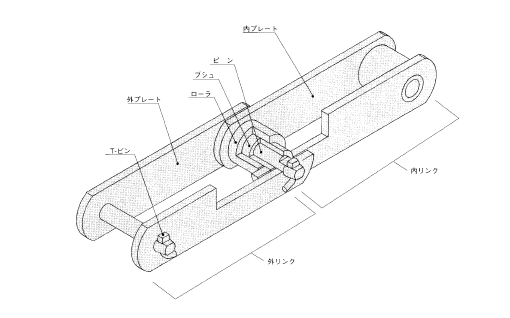A DK conveyor chain features a structure, plus the names in the parts are stated during the drawing. These elements have functions specified below.
Pins
Pins help each of the load acting  within the chain along with plates, and once the chain is engaged using the sprockets, they slide together with bushings as bearings. They’re subject to dress in and particularly should have large shear strength, bending power and wear resistance. Hardened and tempered difficult steel, carburized steel, or induction-hardened steel is applied.
within the chain along with plates, and once the chain is engaged using the sprockets, they slide together with bushings as bearings. They’re subject to dress in and particularly should have large shear strength, bending power and wear resistance. Hardened and tempered difficult steel, carburized steel, or induction-hardened steel is applied.
Rollers
Rollers defend the chain from shocks using the sprockets, and when the chain is engaged with all the sprockets, the rollers bend the chain smoothly and act to reduce the resistance when the chain runs on the rail. They are really required to get high shock fatigue power, collapse power and dress in resistance. Hardened and tempered tough steel, carburized steel or induction-hardened steel is utilized.
Bushings
Bushings are positioned in between pins and rollers and act as bearings for the two the pins and rollers not to transmit the load acquired through the rollers straight for the pins when the chain is engaged together with the sprockets. These are expected to get substantial shock fatigue power, collapse strength and put on resistance, and in general, carburized steel is utilised.
Plates
Plates are subject to repeated stress with the chain and from time to time to massive shocks. They are essential to have substantial tensile power, and particularly high shock power and fatigue power. Substantial tensile steel is used for typical chains and heat-treated alloy steel for heavy-duty chains.
T-pins
T-pins protect against the outer plates from disengaging from your pins. They’re manufactured from soft steel because pins are typically pressed-in the outer plates and consequently no huge force acts to the T-pins.
